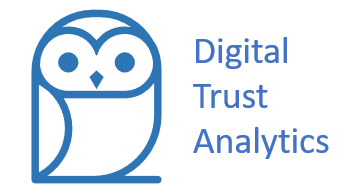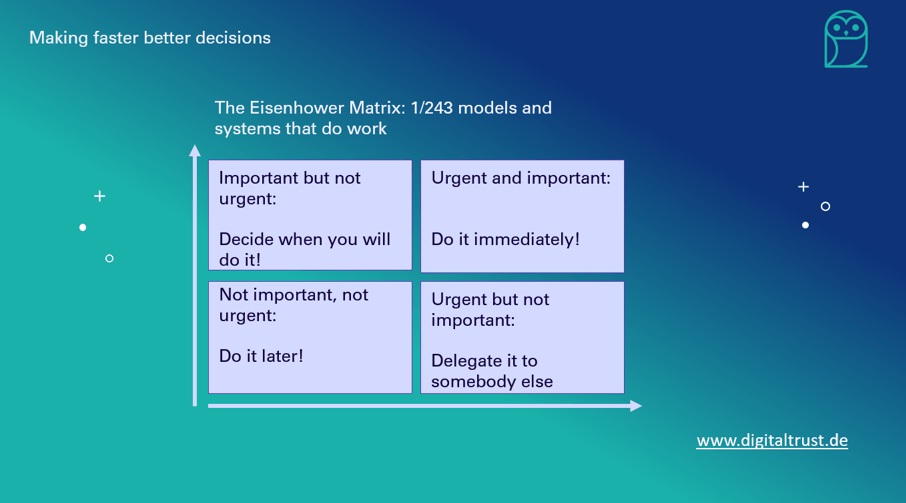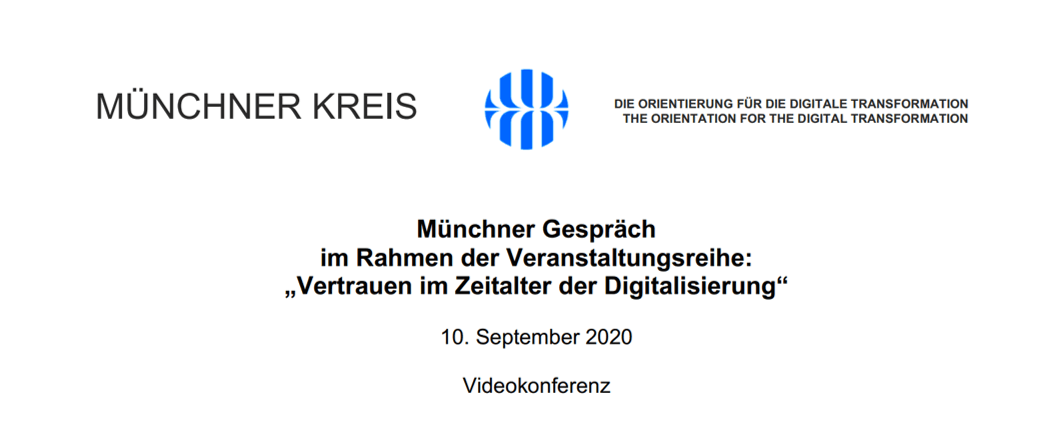The twelve core elements of developing / earning digital trust - the first element
Dr. Katharina von Knop • 24. Juni 2021
Developing technology that is more similar to humans enables us to use them more often and intensely.
Many digital products and business models have a hard time establishing themselves on the market, even if the technical and functional problem-solving qualities are excellent. To achieve market acceptance or scale, many sales are bought with many millions of marketing costs and realized by addressing the most basic triggers such as frequent visibility, favorable prices, or coupons. The question is, can it be done differently or, in the case of cutting-edge technology or highest-value products and services, must it be done differently?
For digital business models, products, and solutions to be used more frequently, more sustainably, more error-free, with more joy, and that too with considerably less marketing effort, the first step would be to fulfill the basic fundamental needs of humans.
The challenges - human decision-making processes
The realization that we make 98 percent of our decisions subconsciously and thus most of our choices are not under our control is rather sobering, as we think of ourselves as consciously analytical people. The mistress of unconscious decision-making processes is our stem brain. This part of the brain is evolutionarily the oldest part of the brain, and therefore, it is essential first to understand the evolutionary learning experiences and resulting behaviors of humans, as these are the primary factors relevant to all decisions.
Only in the subconscious these enormous computing powers, which we carry out every second with the computing power of eight bits, are possible. Above this, the brain consumes only as much energy as a 60-watt light bulb.
What is consciousness now? Consciousness can be thought of as a CEO that only becomes active when a conflict situation arises. An example is when we are tired in the evening and want to stop working but have a deadline. This suppression of tiredness to continue working is an action of consciousness.
In addition, our brain performs its calculations in a world for which it has not yet been evolutionarily created. The number of impulses and information that the brain must process every hour today has increased massively. The nature and frequency of the impulses are very removed from our original way of life. We do not have all the information we need to make decisions, especially in the context of digital solutions, and we cannot cognitively comprehend a significant portion of the news because of its complexity. As users, we rarely have the programming code and algorithms available to us to review, also in most cases, we lack the skills, motivation, and time to do so. These own shortcomings extend in their pathetic heavy ordinariness of ignoring T&C's and privacy statements. At the same time, we must make decisions in digital worlds where we have no evolutionary learning experiences to fall back on. In addition, our own biographical learning experiences are pretty limited because technology develops rather delightful fast.
So we have the option of unbiasedly and naively plunging into the flood of self-overtaking technological innovations. Another chance would be to consistently implement cognitive dissonance, which would mean consciously ignoring all possible risks. This process is familiar to smokers, for example. One knows that smoking is harmful but ignores this and smokes anyway. The same is true of any user who should read and understand the terms and conditions but does not. The third option is to follow the recommendations of comparison portals to know that they receive commissions for the recommendations. Recommendations in trade journals or from bloggers or influencers often follow targeted placements by PR agencies. Everyone knows by now that so-called star ratings are bought with different methods.
To follow our evolutionary disposition and to make the most conscious decisions possible, the fifth option would be to analyze and check the digital tools and systems critically, to understand all the texts and the regulations, to request proof from the company to understand what is being done with the data, to assess which of the activities are in the interest of me, the user. Of course, we would also have to use the solutions very critically and analyze each update first before installing it. This would also include every software update.
Perhaps we will manage to read the terms and conditions and understand them with the help of a lawyer. Whether the digital tool does not go far beyond its own "T&Cs" and collects data from us, analyzes it, and sells it, which may or may not be in our interest. Without checking the coding and algorithms, without looking precisely at the internals of the corporate practice, we do not have this knowledge because many software manufacturers do not live these transparencies and communicate very inaccessibly. In professional employment, we have no choice to use the existing systems.
This approach would require an enormous cognitive load and time, and with the daily high flood of cognitive impulses caused by the increasing complexity of our ways of working and living, this cannot be afforded. We would also lose a great deal of joy in using digital solutions and significant innovations.
Humans tend to be uncertain about digital solutions. This insecurity is well measurable by the detection of the stress hormones cortisol and adrenaline. It is the fear of the lack of controllability of the solutions, the pure non-understanding of how the algorithms work, the reliability of the system, the data usage, the potential data misuse, and concern about cyber risks. This uncertainty has been heightened by the 1.5 years of permanent COVID-19 fear coverage. Even if the content of the news had other content, it led to a sharp increase in stress hormones such as cortisol and adrenaline. This permanent marinating of our brains with stress hormones and the current data situation allows the statement to make us all more anxious.
According to the industry association Bitkom, one in two people do not send confidential information by e-mail for security reasons. One in four does not use social networks, cloud offerings, or online banking. The quality of postings on social networks by users is also changing. Less and less private information is being shared. AI solutions are not catching on quickly enough in the market, and even simple digital solutions in public administration often require a long search. Intense, costly change management and coaching projects are implemented in corporations and government agencies to motivate people to use digital solutions. The results are often extremely poor. It would be more efficient to adapt IT systems to the needs of people.
How can we meet our evolutionary requirements and thus make better decisions online and within digital systems? The solutions, because they meet our needs, would generate more joy in the use, would reduce stress levels significantly, and would massively reduce the marketing expenses
The experimental research
1. Why do technological solutions take so long to be established on the market?
2. How can digitization develop its potential?
3. What do humans need to make a conscious cognitive decision for and within a digital solution?
I have conducted 38 experiments based on actual digital problems with test and control groups with an average size of 1,000 people, analyzed them, and put the results into a systematic structure.
A deep understanding of the conscious and subconscious decision-making processes and the evolution of human beings helps to build digital solutions so that humans are much more likely to accept them and when it comes to HealthTech to follow the advice more frequently, which improves the effectiveness of these solutions. Differentiated, analyzing the potential target groups, 14 different trust phenotypes can be identified that need specific technology and product experience that goes far beyond the screen and the written product argumentation.
The point is that technology needs to become more accessible for people to understand it, to allow humans to make conscious cognitive decisions, it can be more successful in the market faster. But what exactly does that mean? In a nutshell, it often means building something complementary around the core solution that has no benefit to the technical solution but a tremendous benefit to the user decision-making process by addressing more senses, just seeing and hearing. Even using just these senses can be intensively improved. In my scientific research, which was pure real experimental work funded by the European Commission's Science Fund, I have identified twelve core elements needed to make technology more human and, to this species, build digital trust in these solutions. These twelve core elements require adapted characteristics depending on the trust phenotypes. So far, I have identified 14 trust phenotypes.
What is Digital Trust?
But regarding digital systems, we don't have a lot of the information we would need to make a decision, and it's too complicated to tap into that information, like code algorithms, etc.. Furthermore, we don't have evolutionarily anchored any digital in our stem brain regarding digital solutions.
When we develop digital trust, we consciously or subconsciously forgo a risk-opportunity analysis because we feel safe and not just ignore the risks, expecting the system to behave in the right, expected way to serve our interests.
Every decision is based on a conscious/subconscious risk-opportunity trade-off in which we assess costs and benefits. In doing so, we analyze the learning experiences we have accumulated in our biographies and the learning experiences made by others and which we adapt. We also analyze learning experiences that we have accumulated in our stem brain, which began to develop 500 million years ago. Also critical is the current situation we are currently in and the signals we perceive at that moment. When we trust or digitally trust, we forgo information that we need to make a conscious analytical decision.
Making digital technology more similar to humans means building / earning and maintaining digital trust with users.
The Challenges:
1. do not know the coding and algorithms;
2. do not have the necessary knowledge to understand the coding and algorithms.
3. do not have the time and cognitive energy to read the T&C's.
4. only two of our ten senses, yes there are ten senses - some biologists think we have 16 or even more we can use in digital systems so far. That is our ability to see and to hear. More sensors of us are not addressed.
Unfortunately, in the context of digital solutions, the intake of information is still primarily done by reading or interpreting symbols and images, for which our brain needs a lot of "computing power".
Based on evolutionary biological reasons, we have not yet stored any digital learning experiences in our stem brain; this will be the case in a few thousand years. Because of the current technology of screens and HMI's and the way information is communicated through them, it makes sense for the preservation of our visual ability, information acquisition, and processing ability, as well as stabilization of our neuroendocrinology levels, with all the desired enthusiasm for digitals, to keep the time in front screens as short as possible and to renounce the use of screens one day per week completely.
That's why building / earning digital trust is challenging for us.
The first core element to build / earn Digital Trust
All twelve core elements together form the trust infrastructure. This infrastructure works much like the gears of a clockwork. Each core element could be seen as a cogwheel, and each cogwheel must be addressed for it to move. Only when all the cogs are turning can digital trust be earned.
Using the strengths of the human decision-making processes and not the weaknesses, which is more often the case
The feeling of conscious and subconscious uncertainty creates a lot of cognitive loads. What if a photo of me is alienated after all and appears in contexts or creates content I don't want? Is the communicated information correct? Etc. If this uncertainty is removed, we have more of our computing capacity for our actual tasks.
It has been scientifically proven that if digital systems are continuously checked for cybersecurity, safety, data protection, and general terms and conditions by an independent, credible body based on comprehensible decision criteria, and if we are informed of the risks in a simple and comprehensible manner, for example using traffic light colors, we will use them more frequently, more sustainably and with more pleasure. Labels are therefore convincing because they check and condense the many complex pieces of information that are incomprehensible to the user and communicate a statement that can be quickly grasped cognitively, enabling a quick decision to be made.
A manufacturer of software-based products, services, and solutions can do a great deal to enable the user to experience the implemented safety and security positively and credibly and thus massively increase the attractiveness of its solutions. Our experiments also came to this conclusion. If the user can positivly experience safety and security via as many sensors as possible, the user will use a solution more frequently, more sustainably, and more willingly. Unfortunately, this is all too often not done, and it costs sales. The subconscious conclusion from the user's point of view is that if a solution does not make the implemented safety and security easily accessible and more positive, little or nothing will be done for it.
A concrete example is the digital versions of newspapers, which have been so far not very creative in making their analog products available in digital forms. In terms of producing safety, it would counteract the agonizingly low subscription numbers if the company's quality assurance process for checking news information were communicated to the reader, the customer and made tangible. This would also include that PR placements would be labeled as such. Such hard transparency would lift the product "quality journalism", positively impact sales figures, effectively counteract one or other anti-democratic political movements, and would be essential for our liberal democracy.
Key questions for Digital Business CEO´s, CDO´s and Founders
Who are your customers?
Which of the 14 trust phenotypes do your customers belong to?
What level of hard-implemented Cybersecurity, Safety, Privacy and GDPR do these trust phenotypes need?
How do Cybersecurity, Safety, Privacy, and GDPR need to be experienced by these trust phenotypes?
Think beyond your core product and service. What complementary functionalities do these trust phenotypes need?
Who are your customers?
Which of the 14 trust phenotypes do your customers belong to?
What level of hard-implemented Cybersecurity, Safety, Privacy and GDPR do these trust phenotypes need?
How do Cybersecurity, Safety, Privacy, and GDPR need to be experienced by these trust phenotypes?
Think beyond your core product and service. What complementary functionalities do these trust phenotypes need?
Summary:
The first core element for generating digital trust is implementing cognitive positively experienced effective cybersecurity, safety, and data protection for the user. Security and safety and the credible positive experience of their effectiveness are the fundamental basic needs of human beings, and a large proportion of digital business models, products, and solutions already fail to meet these needs. In this context, major hurdles in digitization could be overcome, sales figures massively increase, and marketing costs reduced.The implementation of cybersecurity, safety, and data protection should be efficiently audited by an independent body and carried out based on transparent and comprehensible criteria, and the result should be communicated in a way that is easily accessible to everyone.
Much pressure is exerted on startups by some investors to scale as quickly and rapidly as possible. Under enormous stress, people, unfortunately, opt for close automatisms and forgo cognitive reflection. As a result, much money is spent on marketing. Making the product and service more tangible in terms of cybersecurity, safety, and data protection can be the more effective business decision.
This is the first part of a total of five articles. I'll post the other parts shortly.
This article is based on one I previously published in the magazine: Fachmagain für IT-Sicherheit und Compliance.
I look forward to your feedback and, of course, Likes -👍 🙏Please write to me team@digitaltrust.de
About the author
Dr. Katharina von Knop is the founder and CEO of Digital Trust Analytics. www.digitaltrust.de. In total, she has successfully founded three times. After her studies, she wrote her Ph.D. thesis on countering terrorism, and in this work, she searched for strategic solutions. The thesis has been graded with summa cum laude. She spent five years as a project manager at the strategy consulting firm EGC and Roland Berger Strategy Consultants and was assigned to the Competence Center Financial Services. Before she then set out on founding her own startups, she was the manager responsible for developing digital business models in a corporate group. She has published one monography, edited three academic books and published 34 academic articles.
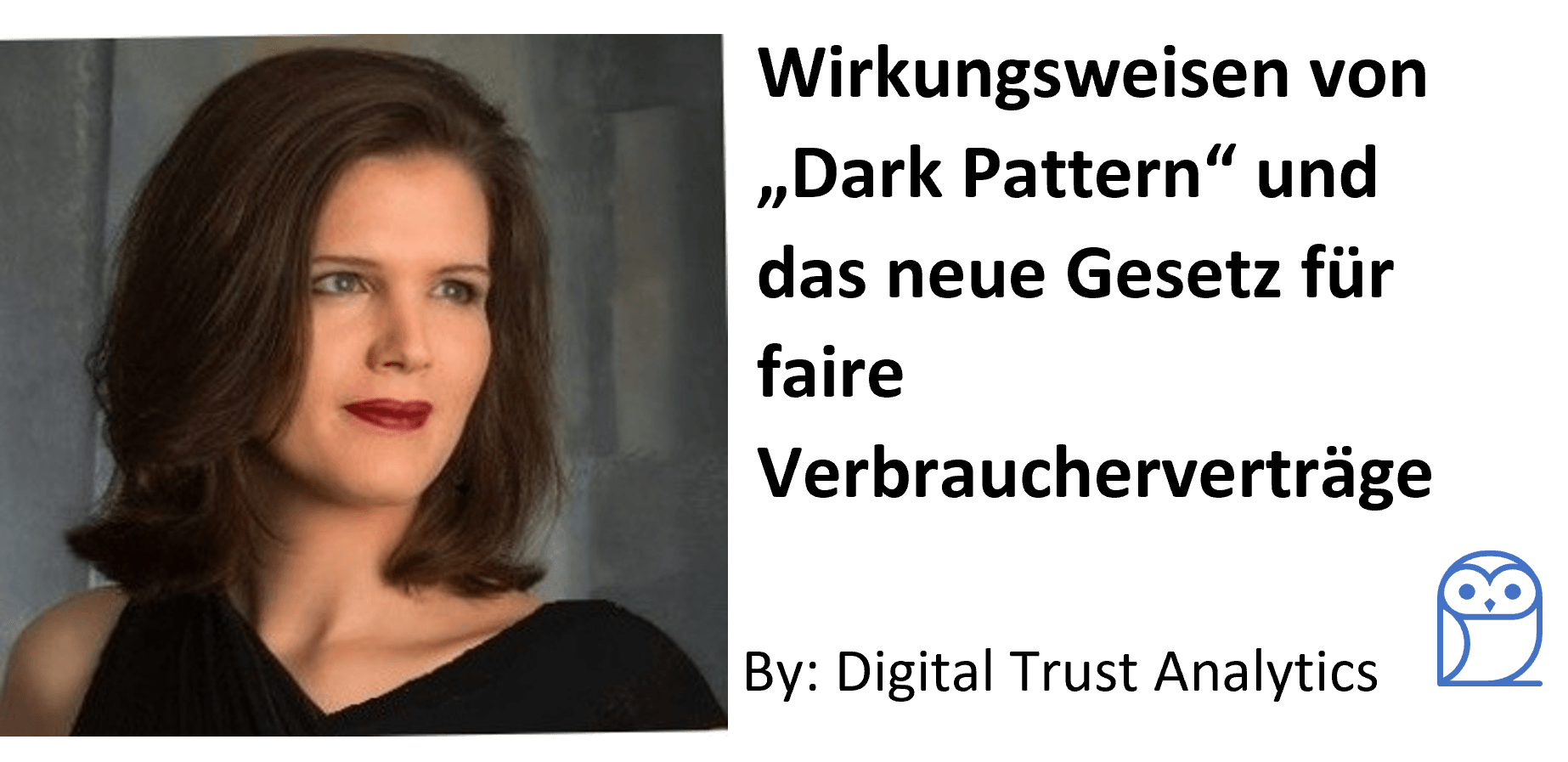
In diesem Artikel erkläre ich die Wirkungseisen von "Dark Patterns" und welche Dark Patterns es gibt. Die wichtigsten Punkte des neuen Gesetzes für faire Verbraucherverträge werden erklärt und auch kurz gesetzliche Veränderungen in den USA bzw. Kalifornien erläutert. Abschließen beleuchte ich eigene Ergebnisse selbst durchgeführte Experimente bezüglich der unternehmerischen Wirkungsweise des Einsatzes von Dark Patterns. Der Einsatz von Dark Patternss ist häufig kontroproduktiv für positive unternehmerische Entwicklung.
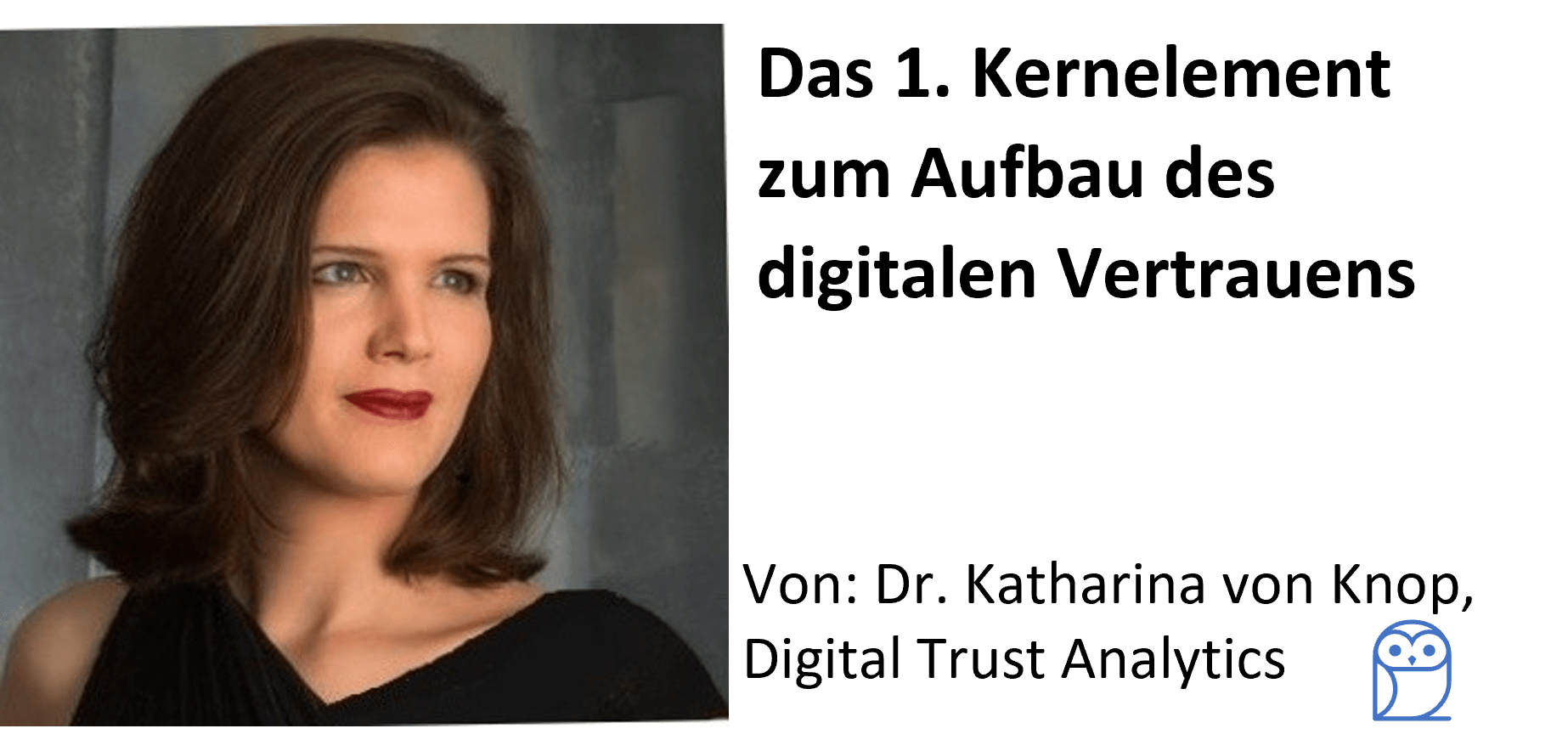
Damit digitale Geschäftsmodelle, Produkte und Lösungen häufiger, nachhaltiger, fehlerfreier, mit mehr Freude und das auch mit weniger wesentlich geringerem Marketingsaufwand genutzt werden, wäre der erste Schritt die grundlegenden basalen Bedürfnisse des Menschen zu erfüllen. Diese grundlegenden basalen Bedürfnisse sind das erste Kernelement des digitalen Vertrauens. Diese basalen Bedürfnisse und wie man diesen in digitalen Lösungen entsprechen kann, beschreibe ich in diesem Artikel.

Technologie dem Menschen ähnlicher gestalten - Die zwölf Kernelemente des digitalen Vertrauens (1/5)
Dieser Beitrag ist einer von insgesamt wir Artikeln die sich mit der Beantwortung der Frage: Wie kann digitales Vertrauens aufgebaut werden?. In dieser Reihe werden die gewonnen wissenschaftlichen Erkenntnisse in einer Kosumentenfreundlichen Sprache wiedergebenen.

Folgende vier Gründe waren Anlass genug, diese Thematik wissenschaftlich zu untersuchen, um valide Erkenntnisse zu erlangen:
1. Starke Herausforderungen digitale Transformationen in Unternehmen umzusetzen und erfolgreiche digitale Geschäftsmodelle zu entwickeln (bezogen auf Deutschland)
2. Die zunehmende Unsicherheit und Stagnation bei der Nutzung von digitalen Lösungen im privaten Bereich.
3. Der Mangel an systematischer Anwendung von validem, interdisziplinären Fachwissen.
4. Die Erkenntnis, dass Technologie menschlicher werden muss
